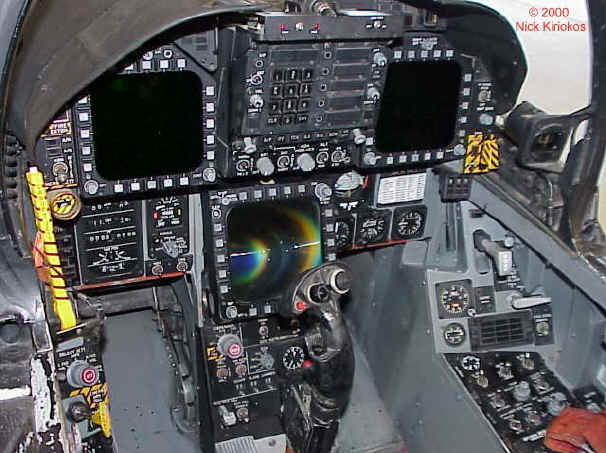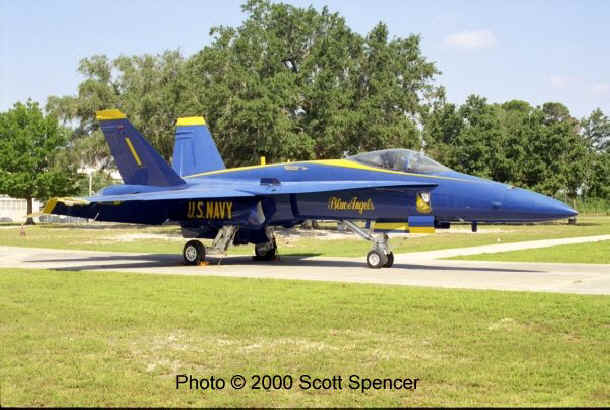 |
|
|||
|
|
||||
|
The F/A 18 Hornet |
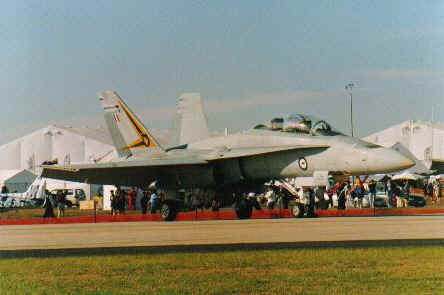 |
A Fighter/ Attack (F/A) aircraft made by Boeing |
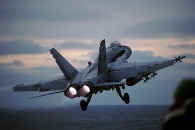 |
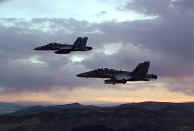 |
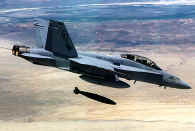 |
| The Operational
Conversion Unit at Royal Australian Air Force Base Williamtown received
its first Hornets in May 1985. Hornets delivered to the RAAF were
assembled in Australia. Aircraft are located at Williamtown, in the
east, and RAAF Base Tindal, in the north. Deliveries were completed in
May 1990. Currently, the fleet is undergoing a two phase upgrade to
include advanced avionics, new countermeasures, a new radar and an
advanced air to air weapons system.
The F/A-18 "Hornet" is a single- and two-seat, twin engine, multi-mission fighter/attack aircraft that can operate from either aircraft carriers or land bases. The F/A-18 fills a variety of roles: air superiority, fighter escort, suppression of enemy air defences, reconnaissance, forward air control, close and deep air support, and day and night strike missions. The F/A-18 Hornet replaced the F-4 Phantom II fighter and A-7 Corsair II light attack jet, and also replaced the A-6 Intruder as these aircraft were retired during the 1990s.
The F/A-18 has a digital control-by-wire flight control system which provides excellent handling qualities, and allows pilots to learn to fly the airplane with relative ease. At the same time, this system provides exceptional manoeuvrability and allows the pilot to concentrate on operating the weapons system. F/A-18A/B/C/D aircraft will fly for years with the U.S. Marine Corps and eight international customers: Australia, Canada, Finland, Kuwait, Malaysia, Spain, Switzerland and Thailand. Although the F/A-18C/D's future growth is now limited, it will also continue to fill a critical role in the U.S. Navy's carrier battle group for many years to come and will be an excellent complement to the larger, longer range, more capable F/A-18E/F Super Hornet. more details at http://www.fas.org/man/dod-101/sys/ac/f-18.htm |
||
F/A-18C/D Technical Specs |
Length:
|
56 ft (17.1 m) |
Propulsion: |
Enhanced Performance Engine (EPE): Two F404-GE-402 engines, each in the 18,000 pound thrust class. Combat thrust-to-weight ratio greater than one-to-one |
Combat Radius:
|
500+ nm (900+ km) |
Armament: |
Up to 13,700 pounds (6,227 kg) external ordnance. Nine weapon stations; two wingtip stations for Sidewinders, two outboard wing stations for air-to-air or air-to-ground weapons, two inboard wing stations for fuel tanks, air-to-air or air-to-ground weapons, two nacelle fuselage stations for AMRAAMs, Sparrows or sensor pods, and one centerline station for fuel or air-to-ground weapons. M61A1 20-mm gun internally mounted in the nose. |
Crew:
|
|
| The Australian Government
contracted to buy 75 McDonnell Douglas attack fighters for the RAAF in
November 1981. This order was for 57 single seat F/A-18As and 18 two
seat F/A-18Bs. The Hornet gave the Tactical Fighter Group (TFG) several
firsts, including a pulse doppler look-down radar with a shoot-down
capability, an inertial navigation system and a Head Up Display.
The Australian Hornet program was for the first two aircraft to be entirely assembled by McDonnell Douglas (McAir) in the USA with the remaining 73 to be assembled by the Government Aircraft Factories (GAF) in Victoria. The F/A-18 is planned to equip the TFG until 2010-2015. If the Hornet can remain in the frontline until then, it will have served longer than the 25 years of the Mirage. Perhaps then, both the Hornet and the F111 will be replaced by a common type. |
 |
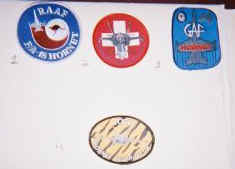 |
| Various badges of RAAF Hornet units/sub-units | |
